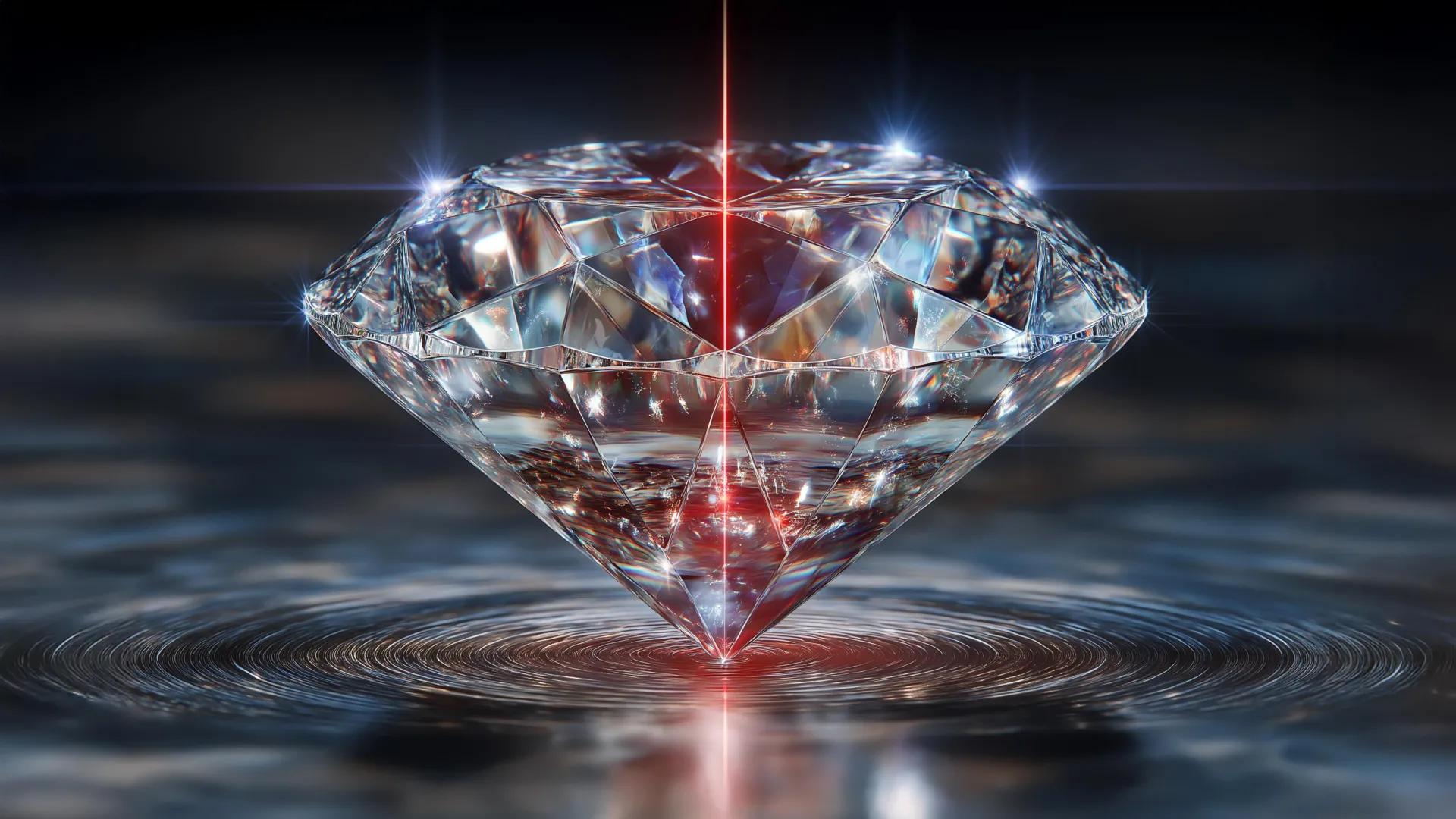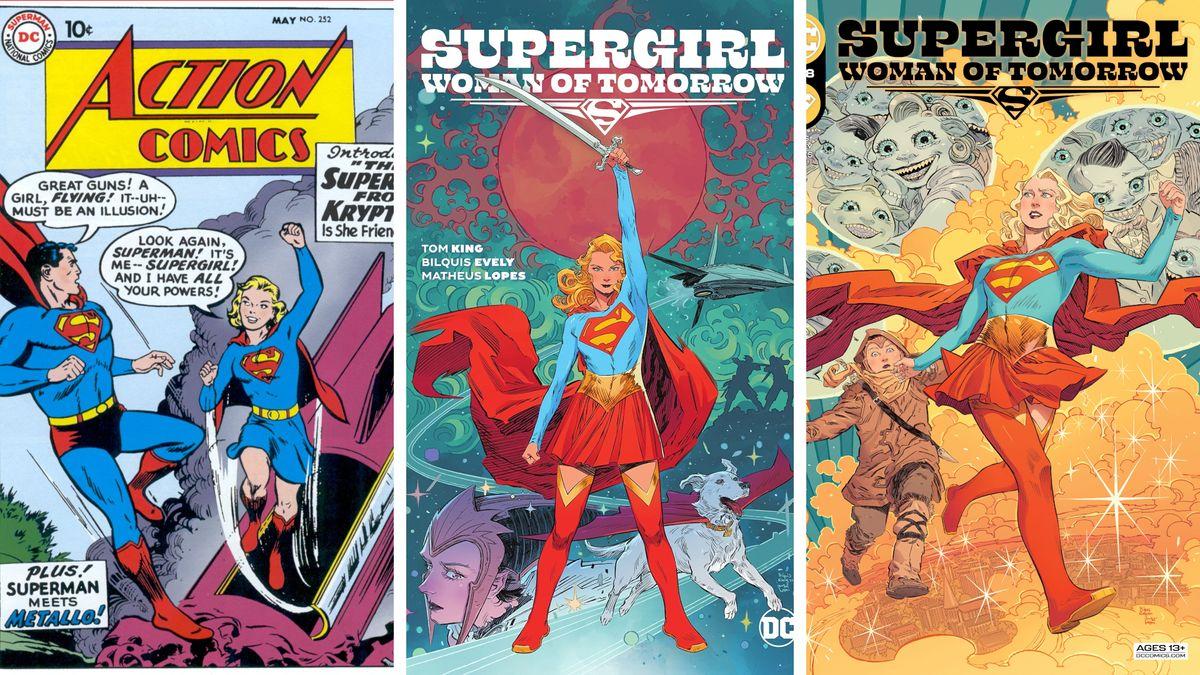Scroll For More

Score (98)
Teens Turn Date Night Into Acts Of Kindness At Local Hospital
In Southington, Connecticut, two high school seniors have turned a simple date night into a global message of kindness. Liliana Vera and Evan Jekubovich, both students at Southington High School, decided to celebrate their four-month anniversary by spreading joy to strangers. Inspired by a TikTok video, the couple purchased flowers, pens, and notecards from Target—not for each other but for those facing difficult times. The pair drove to Hartford Hospital and placed flowers with handwritten notes on car windshields in the parking lot. The messages were straightforward yet impactful: “One step at a time,” “Get better,” and “You’ll get through this.” They also gave extra flowers to the parking garage attendant before sharing their act of kindness on TikTok. The video quickly went viral. “We just wanted to inspire other people how we were inspired,” Vera told NBC Connecticut. “We didn’t expect it to go viral.” Among those touched by their gesture was Amel Zubeidy, who had been staying at the hospital with her daughter. “I was at the hospital...and when I got to the parking lot and saw two purple flowers with a note, it was a surprise," Zubeidy said. "It gave me [a] feeling like someone felt my pain without knowing anything." Vera and Jekubovich hope their actions encourage others to spread kindness. “I hope that it inspires others to do better and be the better version of themselves,” Vera said. Jekubovich added, “It’s important...so people can see that other people are doing good so they can do good too.”

Score (97)
Scientists Discover Method To Grow Diamonds Without Heat Or Pressure
Researchers at the University of Tokyo have developed a surprising new way to make artificial diamonds—using nothing but carbon-based molecules, a bit of clever chemistry, and a tightly controlled electron beam. In a study published in Nature, Professor Eiichi Nakamura and his team revealed how they successfully converted a material called adamantane into nanodiamonds, all without the high pressures or extreme heat typically needed for diamond formation. “This is the ultimate demonstration that electrons do not destroy organic molecules but let them undergo well-defined chemical reactions,” Nakamura said. For the chemist, this breakthrough marks the end of a 20-year scientific pursuit. A low-pressure path to diamonds Traditionally, diamonds are made under conditions that mimic the Earth’s mantle—crushing pressure, searing temperatures—or grown with chemical vapor deposition, a method requiring special gas chambers. Nakamura’s team took a very different approach. They focused on adamantane (C₁₀H₁₆), a cage-like hydrocarbon whose carbon atoms are already arranged in a structure similar to diamond. To turn adamantane into actual diamond, the team had to remove hydrogen atoms (C-H bonds) and stitch the remaining carbon atoms into a solid diamond lattice. Theoretical models had predicted this reaction might be possible, but most scientists assumed it would never work in practice. “The real problem was that no one thought it feasible,” Nakamura said. Watching diamonds form in real time The team used transmission electron microscopy (TEM)—a tool that can image atoms—to bombard tiny adamantane crystals with electron beams ranging from 80 to 200 kiloelectron volts. The reactions occurred in a vacuum chamber, at temperatures as low as -173°C (100 K). This setup allowed them to observe the transformation as it happened: the adamantane chains slowly fused into near-perfect nanodiamonds, roughly 10 nanometers across. The process even released hydrogen gas, a clue that the chemical pathway was working as expected. Notably, other hydrocarbons didn’t yield the same result, highlighting adamantane’s unique structure as the key to success. Not just diamond-making—new doors for science The implications go far beyond diamond production. Because the team could control the process and watch it unfold in real time, this technique may transform how scientists study chemical reactions at the atomic scale. TEM, once thought too destructive for organic compounds, is now showing potential as a tool for building molecular structures. There are also potential applications in fields like electron-beam lithography, materials science, and quantum tech. The researchers suggest this process could even explain how diamonds form naturally in meteorites or uranium-rich rocks, where similar irradiation may occur over long timescales. In the future, this method could also help in fabricating doped quantum dots—tiny semiconductor particles crucial to quantum computing and advanced sensors. A long road to a glittering finish For Nakamura, the discovery is a personal triumph. Since 2004, he’s been chasing the idea that electrons, under the right conditions, could guide rather than destroy complex molecules. “Computational data gives you ‘virtual’ reaction paths, but I wanted to see it with my eyes,” he said. Now, with one of Earth’s hardest and most iconic materials forming under a microscope, that vision has become crystal clear.

Score (92)
'Supergirl' Turns 10: How The Arrowverse Series Paved The Way For James Gunn's DC Universe
James Gunn’s Superman might be promoting kindness as the new rebellion, but that message has already flown across our screens — cape and all — thanks to Supergirl. Long before David Corenswet’s Clark Kent lifted hopeful heroism back into the spotlight, Melissa Benoist’s Kara Danvers was showing us what it really means to lead with compassion, vulnerability, and heart. Premiering in 2015, Supergirl began as a standalone series on CBS before joining The CW’s interconnected Arrowverse in its second season. At the time, DC’s cinematic universe was chasing gritty realism with a darker, more brooding Superman, while Supergirl went in the opposite direction — all sunshine, sincerity, and sleeves-worn emotions. It was a show unafraid to be earnest. Kara Zor-El wasn’t just fighting aliens and supervillains; she was wrestling with identity, responsibility, and belonging. Was she Kara Danvers, the journalist with a messy apartment and deep friendships? Kara Zor-El, the last daughter of Krypton? Or Supergirl, the symbol of hope? The show didn’t shy away from the fact that she was all three — and that her humanity, not her powers, was her greatest strength. “I love her humanity,” Benoist said in an interview before the show’s debut. “She is an alien, [but] I love that she really has a lot of discovering to do, and growth, and makes mistakes. I think she's so relatable, and I just want to stay true to that.” That approach became the foundation of the show. Sure, there were world-ending threats and sci-fi spectacle, but Supergirl always found time to explore what it meant to be kind — especially when it was hard. Whether she was facing Lex Luthor’s manipulation, the rise of the anti-alien Children of Liberty, or the isolation that comes from being “other,” Kara never let hate dictate her path. She stood up, again and again, for what was right — not because she was bulletproof, but because she believed people could be better. It’s a message Gunn echoes in Superman, where hope isn’t a corny afterthought but the whole point. His take on the Man of Steel leans more toward Tyler Hoechlin’s warm, goofy Superman from Supergirl and Superman & Lois, rather than the grim, conflicted version in Zack Snyder’s DC films. It’s no coincidence. If Supergirl taught us anything, it’s that superheroes can still be symbols of optimism without sacrificing depth. That’s why Supergirl resonated. It wasn’t about building a cinematic universe or stacking cameos (though it eventually had its share). It stayed focused on character — and Kara’s arc always led back to one question: How do you lead with compassion when the world gives you every reason not to? The answer: You just do. By the time the show wrapped its six-season run, it had donated its entire beating heart to the Arrowverse. It proved that kindness isn’t weakness. It’s power. It’s punk. And it’s what sets heroes apart from everyone else — not just their strength, but their refusal to give up on others. So while Milly Alcock’s Supergirl may be headed in a different direction in Gunn’s evolving DC Universe, Benoist’s legacy is already part of its DNA. Her version of Kara reminded audiences that empathy is a superpower. And in a world where being earnest feels countercultural, Supergirl was quietly revolutionary. Before kindness was punk rock, Supergirl was already in the band.

Score (97)
These Nurses Just Saved a Passenger's Life While Flying To Abu Dhabi For New Jobs
Two Indian nurses headed to the UAE to begin new medical careers found themselves performing life-saving CPR at 30,000 feet — before they even started their first day of work. Abhijith Jees, 26, from Wayanad, and Ajeesh Nelson, 29, from Chengannur, were on their first-ever international flight when the emergency unfolded on board an Air Arabia flight from Kochi to Abu Dhabi on October 13. “It was like someone gasping,” Jees said. “When I looked, I saw a man unresponsive. I checked his pulse, but there was none. I knew he was in cardiac arrest.” The 34-year-old passenger, from Thrissur, had suffered a sudden cardiac arrest. Jees immediately began cardiopulmonary resuscitation (CPR) while alerting the flight crew. Within moments, Nelson joined him, and together they performed two rounds of CPR until the man regained a pulse and began breathing again. “When I saw him move, I felt a deep sense of relief,” Jees said. “It reminded me that we carry our responsibility wherever we go.” A doctor on the flight, Arif Abdul Khadir, also stepped in to assist. The trio stabilised the patient, started IV fluids, and monitored his condition until the flight landed safely in Abu Dhabi. “When we saw him respond, it felt like a blessing,” Nelson said. “It was our first journey abroad, and to be able to save a life before even starting our new jobs felt like the best welcome we could have received.” Both men had worked as staff nurses in Kerala and were travelling to begin new roles as registered nurses with Response Plus Medical, a subsidiary of the UAE’s largest emergency medical provider, Response Plus Holding. Dr Mohamed Ali, medical director of RPM Projects, said the incident showed how vital rapid intervention is during cardiac emergencies. “In any cardiac arrest, every second counts,” he said. “Early recognition and prompt CPR can make the difference between life and death, whether it happens mid-flight or on the ground. What these two nurses did reflects the very essence of medical readiness and teamwork.” The passenger was reported to be in stable condition after being treated by the airport medical team upon arrival. His family later shared a message of gratitude: “We cannot thank these nurses enough. They were strangers to us, yet they gave our loved one another chance at life. Their kindness and courage will always stay in our prayers.” For Jees and Nelson, the experience was more than a dramatic welcome to their new country — it was a powerful reminder of why they entered the profession. “We came to the UAE to start our careers,” said Nelson. “Saving a life on the way made us realise what this profession truly means.” “You never expect something like this to happen,” Jees added. “But when it does, you just do what you are trained for. That morning in the sky will stay with us forever.”

Score (97)
Woman's Wheelchair Has Crazy Horsepower...Literally
A Belgian equestrian with a passion for the outdoors found a quirky way to get around as she recovered from a bicycle accident that left her temporarily unable to walk or ride horses. Footage here shows wheelchair user Samantha Salmon, an equestrian teacher, being pulled by a horse harness-racing-style through the streets of a sleepy suburb of Liege. “This stallion has received many years of training,” Salmon told Storyful. “He responds with great precision to voice commands and works here in a halter.” “Life reminded me of its fragility through an incident that could have ended much worse,” she said of the September bike accident that injured her. “I was trying to rediscover a bit of a zest for life and this wonderful stallion helped me with that.”

Score (93)
Swedish Man Digging For Worms Stumbles on One of The Country’s Largest Medieval Silver Hoards
A man in Sweden looking for fishing bait has accidentally uncovered one of the country’s most remarkable archaeological finds in years — a massive stash of medieval coins and jewelry buried in a cauldron. Authorities say the discovery, made in Stockholm County near the man’s summer cottage, includes thousands of silver coins, ornate rings, pendants, and beads dating back to the early Middle Ages. The cauldron holding the objects weighed about six kilograms — roughly 13.2 pounds — and could contain up to 20,000 coins, according to the County Administrative Board of Stockholm. Officials described the hoard as “unusually large and well-preserved.” Sofia Andersson, an antiquarian with the board, called it “one of the largest silver hoards from the early Middle Ages ever found in Sweden.” “We don’t yet know exactly how many coins there are, but I believe it could be up to 20,000,” Andersson said in a translated statement. “Most of the objects are well-preserved, though unfortunately the copper cauldron that contained them is not.” Photos released by the board show the treasure: a gleaming pile of weathered coins mixed with medieval jewelry, many of which have intricate designs and religious symbolism. The man who made the discovery was digging for worms to use as fishing bait when he came across the buried cauldron. Authorities have not released his name or the exact location of the find, citing an ongoing investigation. The collection includes several rare coins, including one inscribed with a reference to 12th-century Swedish king Knut Eriksson, and another from the island of Gotland depicting a church. Officials also highlighted coins showing bishops holding croziers — known as “bishop’s coins” — which were historically minted under the authority of religious leaders in certain parts of medieval Europe. “During the Middle Ages, so-called bishop's coins were minted in parts of Europe — coins produced on behalf of a bishop,” the County Administrative Board said. “The hoard contains several such coins depicting a bishop holding a crozier in his right hand.” Sweden’s Cultural Environment Act requires that discoveries like this be reported to the government, and the finder followed the law precisely. The County Administrative Board is now working with the Swedish National Heritage Board, which will determine whether the state will redeem the treasure — meaning the government compensates the finder and keeps the artifacts. “The finder did exactly the right thing by contacting us at the County Administrative Board,” said Andersson. “According to the Cultural Environment Act, anyone who finds an ancient object made of silver or a hoard is required to offer it to the state for redemption in exchange for payment.” Archaeologists are now studying the hoard in detail, documenting and cataloguing the items to better understand their historical significance. The discovery joins a growing list of exceptional hoards found across Northern Europe in recent years. In 2023, a plumber in the UK uncovered a cache of ancient coins in a field, while a British family stumbled upon a trove of Tudor-era coins in their backyard in 2020. That collection is set to be auctioned this November in Zurich. As for the Swedish hoard, it offers a rare and detailed glimpse into the region’s medieval economy, trade routes, and religious influence — all thanks to a routine fishing trip that took a very unexpected turn.

Score (96)
Navy Sailor Rescues Driver From Burning Car In Illinois Mall Parking Garage
A Navy sailor is being hailed for his bravery after helping rescue a man from a burning vehicle at a shopping mall in Schaumburg, Illinois. The incident happened on the afternoon of Saturday, October 25, in the upper-level parking garage of the Macy’s store at Woodfield Mall. According to Schaumburg Police, a driver suffered a medical emergency before his vehicle caught fire around 2:20 p.m. local time. Video footage captured by local news outlet WLS showed thick black smoke pouring from the car as flames spread, eventually damaging three other nearby vehicles. The fire did not reach the mall’s interior or nearby buildings. Bystanders quickly jumped in to help — among them, William Thompson, a U.S. Navy sailor who had recently completed boot camp. "Instantly, it's like my body moving on itself," Thompson told WLS. "It’s like everything the Navy taught me, just instantly erupted inside of me." Thompson broke the vehicle’s window to reach the driver and said he sustained injuries in the process. With help from other Good Samaritans, he managed to pull the man to safety before firefighters arrived. Crews extinguished the fire using a foam-and-water blanket, designed to control fuel leaks, according to the Daily Herald. The driver was transported to a hospital for treatment. His condition has not been publicly released. Authorities are continuing to investigate the cause of the fire, but praised the quick action of those who intervened. Thompson, for his part, downplayed his role, but his actions are drawing praise from both local officials and his fellow service members.

Score (97)
New Sleep Database Reveals Your Brain is Dreaming Far More Than You Think
Dream research just got its biggest leap forward in decades — and it’s turning some long-held sleep science myths upside down. In a landmark collaboration led by Monash University, scientists have created the DREAM database, the first large-scale, standardized collection of brain recordings tied to dream reports. The open-access project combines data from 2,643 awakenings across 505 people in 20 different studies — making it the largest and most consistent snapshot of what actually happens in the human brain during sleep. “Understanding how, when, and why we dream could help us answer a fundamental scientific question: how can we determine whether someone is conscious when they are unable to communicate?” said Nao Tsuchiya, one of the project’s lead researchers at Monash. The database shatters the old assumption that dreams only occur during REM sleep. Brain activity linked to dream recall appeared in: • 88% of awakenings during light sleep • 56% during moderate sleep • 48% during deep, slow-wave sleep In other words, your brain is far busier while you sleep than scientists once thought. Even during stages considered the most “unconscious,” people reported vivid and complex dreams — including some with brain wave patterns that closely resemble wakefulness. That’s the kind of insight that wasn’t possible before. Until now, dream research was stuck in silos: isolated studies, inconsistent methods, and small sample sizes that couldn’t be easily compared. The DREAM database solves that, offering a centralized, high-quality set of EEG data with strict technical standards — including consistent sampling rates, quality control measures, and detailed documentation for each awakening. It’s already paying off. Using machine learning, researchers trained algorithms to detect whether someone is dreaming — just from their brain activity — with up to 70% accuracy during REM, and still well above chance in other stages. The tech is not only exciting for dream science, but it could eventually be used to detect consciousness in people who can’t communicate, such as coma patients or those with severe brain injuries. “This could be a game-changer for sleep medicine and consciousness research,” Tsuchiya said. Beyond the science, the implications are broad: the findings may help improve sleep-tracking devices, inform new treatments for sleep disorders, and pave the way for tools that can better measure internal experiences — like pain, emotion, or awareness — in patients who are otherwise unresponsive. Researchers can now stop reinventing the wheel with every small study and instead build on a shared foundation. The DREAM database isn’t just a tool — it’s a turning point for understanding what the sleeping brain is truly capable of. And, as it turns out, that strange dream you had last night? It might be far more real, and far more meaningful, than anyone thought.

Score (91)
Elijah Wood Surprises Guests At Hobbiton Wedding, Leaves Ring Intact
A lucky couple were surprised by an unexpected guest during their Lord of the Rings themed wedding in New Zealand on Monday, October 27. Footage posted by the official Hobbiton Movie Set account shows Hollywood star Elijah Wood gatecrashing the ceremony at the iconic tourist spot to the joy of the bride and groom. The couple’s wedding photographer Cath Ullyett recounted the moment in an Instagram post. “While Sharik and Jessica were signing their wedding documents, Elijah and his family were escorted past the ceremony garden, and had stopped to watch,” she wrote. “After the couple had finished signing, I rushed around to meet him and asked him to come and have a few photos with the couple. Being the gentleman he is, he didn’t want to interfere, however, with some friendly encouragement he stepped in and was welcomed by all.”

Score (97)
Scientists Discover Powerful New Antibiotic Hidden In Plain Sight For Decades
In a major step forward against antibiotic resistance, scientists have discovered a potent new antibiotic compound — not by exploring unknown microbes, but by taking a second look at one that’s been studied for decades. The new compound, called pre-methylenomycin C lactone, was identified by researchers from the University of Warwick in the UK and Monash University in Australia. It comes from Streptomyces coelicolor, a bacterial species that has served as a model organism for antibiotic research since the 1950s. “Finding a new antibiotic in such a familiar organism was a real surprise,” said Lona Alkhalaf, a chemist at the University of Warwick. What makes the discovery even more striking is that the compound isn’t a newly evolved molecule. It’s actually an intermediate — a chemical step in the natural production of another antibiotic, methylenomycin A. Until now, no one had thought to test this intermediate for its own antibiotic properties. Turns out, it's remarkably effective. In lab tests, pre-methylenomycin C lactone was found to be 100 times more potent than methylenomycin A against Gram-positive bacteria — a group that includes some of the most dangerous drug-resistant pathogens. Specifically, the compound proved effective against MRSA (Methicillin-resistant Staphylococcus aureus) and VRE (Vancomycin-resistant Enterococcus), both of which are responsible for severe hospital-acquired infections. Even more promising: the bacteria didn’t develop resistance to it, even after 28 days of continuous exposure. That resilience is rare — and increasingly valuable in a world where antibiotic resistance is rendering many existing treatments useless. “Methylenomycin A was originally discovered 50 years ago, and while it has been synthesized several times, no one appears to have tested the synthetic intermediates for antimicrobial activity,” said Greg Challis, another researcher from Warwick. The discovery came after the team decided to genetically tweak the bacterium’s biosynthetic pathway — essentially modifying the genetic assembly line that produces methylenomycin A. By isolating and testing each step in the process, they identified the intermediate compound with unexpectedly powerful antimicrobial properties. This approach could signal a new direction in the search for antibiotics. “By identifying and testing intermediates in the pathways to diverse natural compounds, we may find potent new antibiotics with more resilience to resistance,” said Challis. “This discovery suggests a new paradigm for antibiotic discovery.” With antibiotic resistance now causing millions of deaths worldwide each year, the pressure to find new treatments is higher than ever. While pre-methylenomycin C lactone still needs further preclinical testing before it can be developed into a usable drug, the early signs are promising — and suggest there may be more hidden gems waiting to be uncovered in even the most familiar bacteria. The research was published in the Journal of the American Chemical Society.

Score (96)
World's Largest Museum Dedicated To Ancient Egypt Opens This Week
The wait is nearly over. This Saturday, Egypt will officially unveil the Grand Egyptian Museum (GEM), the largest museum in the world dedicated to a single civilisation. Located just outside Cairo near the iconic Pyramids of Giza, the massive complex will display more than 100,000 ancient artefacts, from the famed golden mask of Tutankhamun to pharaoh Khufu’s full-sized ‘solar boat’ — a 4,600-year-old cedar vessel buried beside the Great Pyramid and rediscovered in 1954. The centrepiece of the opening will be the long-anticipated Tutankhamun Galleries, showcasing over 5,000 objects from the boy king’s tomb — many of which have never been seen by the public. These include dazzling jewellery, ceremonial chariots, and life-size statues, all offering a glimpse into the life and death of one of Egypt’s most legendary pharaohs. Visitors will enter the museum through the Grand Hall and Grand Staircase, flanked by towering columns inscribed with hieroglyphs and colossal statues of ancient rulers. These lead to the Main Galleries, first previewed by a select group of 4,000 visitors in October 2024. The public will be able to visit the museum starting 4 November. Tickets for adult foreign visitors will cost 1,450 Egyptian pounds, or about €30. The opening ceremony, expected to draw leaders and dignitaries from around the world, will be live-streamed on TikTok — a nod to the museum’s efforts to bridge ancient history with modern technology. In total, GEM offers 22,000 square metres of exhibition space and aims to attract up to five million visitors annually. But it’s not just a display space; the museum also houses one of the world’s most advanced conservation and research facilities. An underground tunnel links the main exhibition halls to 19 state-of-the-art laboratories dedicated to preserving everything from fragile papyri to mummified remains. Architecturally, the GEM is as ambitious as the treasures it holds. Designed by Irish architect Roisin Heneghan, the building mirrors the pyramids in both form and spirit, blending geometric structures with cutting-edge sustainability features. Reinforced concrete helps regulate internal temperatures, reducing the need for air conditioning. Outside, triangular gardens designed with Dutch landscape firm West 8 draw inspiration from the lush flora of the Nile Valley. The Grand Egyptian Museum has been in development for over two decades and faced several delays. But with its doors finally opening, it’s set to become one of the world’s most significant cultural landmarks — a modern tribute to an ancient civilization.